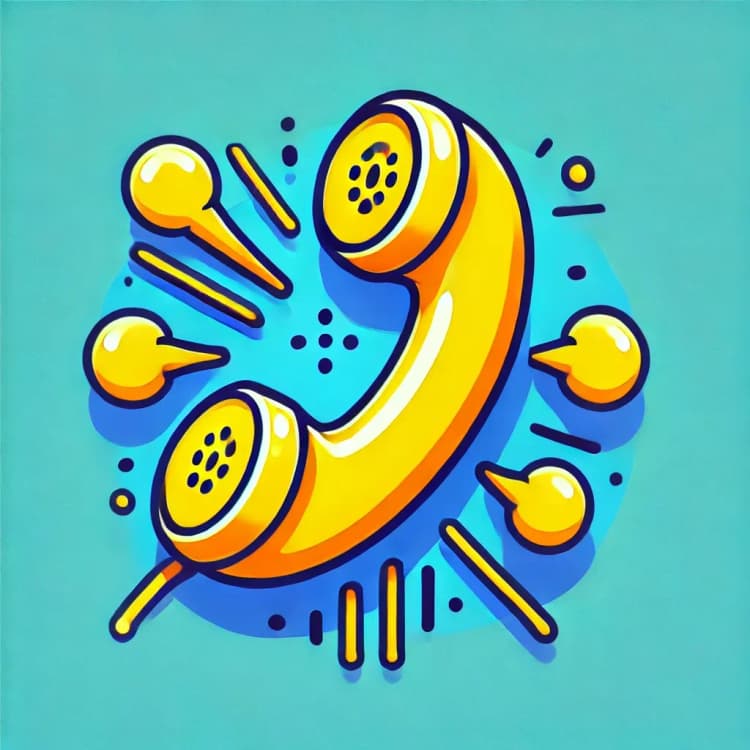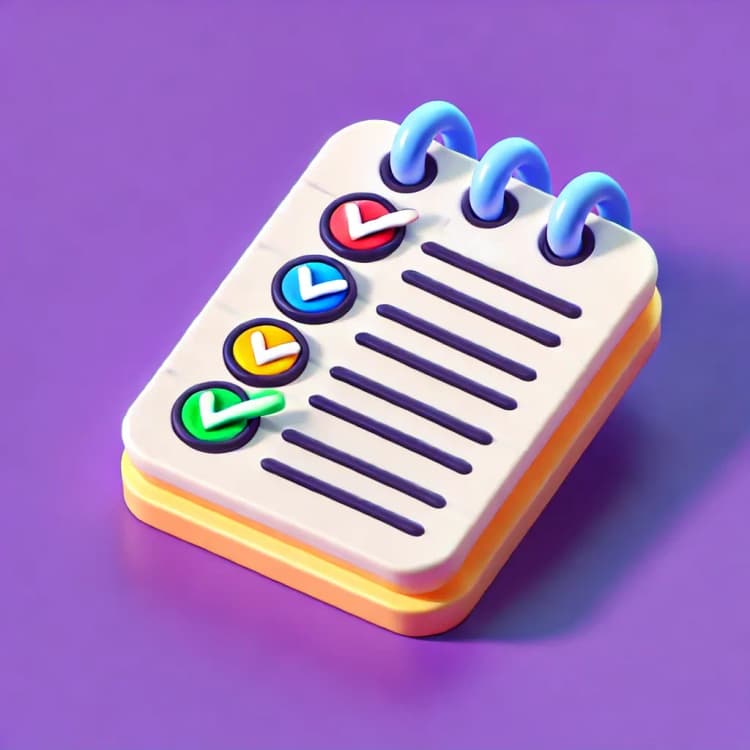What is Cold Calling? (And How to Make It Work)


Cold calling has been a cornerstone of sales strategies for decades, and despite the rise of digital marketing and inbound sales techniques, it remains a crucial component of modern sales strategies.
In the fast-paced world of B2B SaaS, where competition is fierce and decision-makers are bombarded with countless marketing messages, a well-executed cold call can cut through the noise and establish a direct, personal connection with potential customers.
This comprehensive guide will take you on a journey through the history of cold calling, exploring its evolution and the key milestones that have shaped its development. We'll delve into the numerous benefits of cold calling, particularly in the context of B2B SaaS, and examine how this tried-and-true technique can help you engage with prospects, gather valuable feedback, and ultimately drive sales.
But a successful cold calling strategy requires more than just picking up the phone and hoping for the best. That's why we'll also explore the tools and resources available to enhance your cold calling efforts, from cutting-edge software that streamlines the process to proven strategies that maximize your chances of success.
Whether you're a seasoned sales professional looking to refine your approach or a B2B SaaS startup seeking to establish a foothold in the market, understanding the power and potential of cold calling is essential. So, let's dive in and discover how this timeless sales technique can help you connect with your target audience, build relationships, and achieve your business goals in today's competitive landscape.
What is Cold Calling?#Cold calling is a time-tested sales technique where salespeople directly reach out to potential customers who haven't previously shown interest in the company's products or services. It involves contacting prospects, usually by phone, to introduce your offering, gauge their interest, and ideally, set up a meeting or demo.
In the cold calling process, salespeople work from a list of potential customers, which may be compiled through research, purchased from lead generation services, or derived from other marketing efforts. The goal is to start a conversation, qualify the prospect, and ultimately convert them into a customer.
While the rise of inbound marketing and digital sales strategies has led some to question the relevance of cold calling, it remains a highly effective technique, particularly in the B2B SaaS space. Cold calling allows sales professionals to directly engage with decision-makers, cutting through the noise of a crowded digital marketplace.
One of the key advantages of cold calling for B2B SaaS companies is the opportunity for immediate feedback. Unlike email or other digital outreach methods, a cold call enables salespeople to have a real-time conversation with potential clients. This allows for instant qualification of prospects, personalized pitches, and the ability to address objections or questions on the spot.
Moreover, cold calling can help B2B SaaS companies reach a wider audience, including those who may not be actively seeking a solution or engaging with digital marketing channels. By proactively reaching out, salespeople can introduce their product to potential customers who may not have otherwise considered it.
Of course, effective cold calling requires more than just picking up the phone. It involves research, strategic planning, and the ability to quickly build rapport and trust with prospects. In the following sections, we'll explore the history of cold calling, its specific benefits in the B2B SaaS context, and the tools and strategies you can use to maximize your success rates.
History of Cold Calling#Cold calling has been a staple of sales strategies for decades, but it has evolved significantly over the years to adapt to new technologies and changing consumer behaviors.
The origins of cold calling can be traced back to the early 20th century with the rise of telephone usage in business. As more households and businesses acquired phones, salespeople began using this tool to reach out to potential customers. However, these early cold calls were largely unstructured and relied heavily on the individual salesperson's persuasion skills.
A significant milestone in the history of cold calling came with the introduction of Customer Relationship Management (CRM) systems in the 1980s. CRM software allowed companies to store and manage large amounts of customer data, enabling salespeople to make more targeted and personalized calls. This marked a shift towards a more data-driven approach to cold calling.
The 1990s saw the advent of predictive dialing technology, which automatically dials numbers and connects answered calls to available salespeople. This innovation greatly increased the efficiency of cold calling, allowing sales teams to make more calls in less time.
With the rise of the internet and mobile phones in the early 2000s, cold calling faced new challenges. Consumers became increasingly resistant to unsolicited calls, and the introduction of the National Do Not Call Registry in 2003 placed restrictions on cold calling practices.
Despite these challenges, cold calling has continued to evolve and remain relevant. The integration of social media and other digital data sources has given salespeople new ways to research and connect with potential customers. Tools like auto dialers, call recording, and real-time analytics have made cold calling more efficient and data-driven than ever before.
Today, cold calling is far from the unstructured, shot-in-the-dark approach it once was. Modern cold calling is a strategic, targeted, and data-informed process that can yield significant results, particularly in the B2B SaaS space.
Understanding the history of cold calling helps us appreciate its current applications and future potential. While the methods and technologies have changed, the core principle remains the same: directly connecting with potential customers to introduce your product and drive sales.
In the next section, we'll explore the specific benefits of cold calling for B2B SaaS companies.
Benefits of Cold Calling#While cold calling may seem like an old-fashioned sales tactic in the digital age, it still offers several unique benefits that make it a valuable tool in any B2B SaaS sales strategy.
One of the primary advantages of cold calling is the opportunity for direct engagement with potential customers. Unlike email or social media outreach, a phone call allows for a real-time, one-on-one conversation. This personal interaction can help build rapport, trust, and a sense of connection with the prospect.
Cold calling also provides immediate feedback and interaction. Salespeople can gauge the prospect's interest, answer questions, and address objections in real-time. This instant feedback loop allows for quick adjustments and personalization of the sales pitch, increasing the likelihood of a successful outcome.
Moreover, cold calling allows salespeople to gather valuable information about the prospect's needs, challenges, and decision-making process. These insights can inform future interactions and help tailor the sales approach to better resonate with the target audience.
But perhaps the most compelling argument for cold calling is its potential impact on conversion rates. According to a study by Focus Digital, the average cold call conversion rate is 2% across the entirety of cold calls. While this may seem low, it's important to consider the cumulative effect of these conversions over time.
For example, if a salesperson makes 100 cold calls per day, a 2% conversion rate would yield 2 new customers. Over the course of a month (assuming 20 work days), that's 40 new customers. For a B2B SaaS company with a high customer lifetime value, these conversions can have a significant impact on revenue growth.
It's also worth noting that the success of cold calling can vary depending on the industry, target audience, and the skill of the salesperson. With a well-researched prospect list, a compelling value proposition, and a skilled sales team, B2B SaaS companies can often achieve even higher conversion rates.
Of course, cold calling is not without its challenges. It requires significant time and effort, and many prospects may be resistant to unsolicited calls. However, when used strategically as part of a larger sales and marketing plan, cold calling can be a powerful tool for driving growth and revenue in the B2B SaaS space.
In the next section, we'll dive deeper into the specific applications and strategies for cold calling in B2B SaaS sales.
Cold Calling in B2B SaaS#Cold calling can be a particularly effective sales strategy in the B2B SaaS sector. Unlike B2C products, SaaS solutions often require buy-in from multiple stakeholders and decision-makers within an organization. Cold calling allows salespeople to reach these key individuals directly, bypassing gatekeepers and cutting through the noise of digital marketing channels.
Call Blitzes#One common cold calling tactic in B2B SaaS is the "call blitz." This involves dedicating a concentrated period of time, often a day or a week, to making a high volume of calls to a targeted list of prospects. The goal is to generate a surge of interest and book a maximum number of meetings or demos.
Call blitzes can be especially effective when timed around key industry events, product launches, or promotional campaigns. By aligning outreach with relevant news or offerings, salespeople can create a sense of urgency and tap into existing buzz.
Cold Calling Strategies#To make the most of cold calling in B2B SaaS, it's important to approach it strategically. This means investing time in researching prospects, understanding their challenges and goals, and tailoring pitches to their specific needs.
One effective strategy is to lead with a strong value proposition. Rather than simply listing product features, salespeople should focus on the tangible benefits and ROI that their solution can provide. Case studies, testimonials, and industry-specific data points can be powerful tools for demonstrating value.
Another key strategy is to use cold calling as part of a larger account-based marketing (ABM) approach. By aligning sales and marketing efforts around a list of high-value target accounts, B2B SaaS companies can create a more personalized and impactful outreach campaign.
Success Rates and Metrics#As with any sales tactic, tracking success rates and key metrics is crucial for optimizing cold calling strategies over time. According to recent cold calling statistics, the average sales development rep makes 52 calls daily, and it takes an average of 18 dials to connect with a buyer.
Other important metrics to track include conversion rates from calls to meetings booked, meetings held, and ultimately, closed deals. By regularly reviewing these numbers, sales leaders can identify top performers, pinpoint areas for improvement, and continually refine their approach.
It's also worth noting that the quality of cold calls is often more important than the quantity. A well-researched, personalized call that provides genuine value to the prospect is far more likely to lead to a positive outcome than a generic, scripted pitch.
Ultimately, the key to success with cold calling in B2B SaaS is to approach it as a strategic, data-driven process. By investing in the right tools, training, and tactics, sales teams can effectively leverage this traditional but still highly relevant channel to drive growth and revenue in today's competitive landscape.
Next, let's explore some of the top tools and resources available to support and enhance B2B SaaS cold calling efforts.
Cold Calling Tools and Resources#In today's digital age, a wide array of tools and resources are available to support and enhance cold calling efforts. From software that streamlines the calling process to educational materials that sharpen sales skills, these assets can be invaluable for B2B SaaS sales teams looking to optimize their performance.
Top Cold Calling Tools#One of the most essential tools for any cold calling team is a robust Customer Relationship Management (CRM) system. Platforms like Salesforce, HubSpot, and Pipedrive allow sales reps to manage prospect data, track interactions, and monitor pipeline progress all in one centralized location.
Here’s a few of our favorites with demos on Dimmo!
1. Orum: Orum is the leading live conversation platform leveraging AI to supercharge sales activity, connect sales teams, and drive more revenue over the phone.
2. Nooks: Nooks' AI Dialer, automates manual tasks like skipping ringing and answering machines, logging calls, and taking notes. With additional features like AI Research, Call Analytics, Virtual Sales Floor and Nooks Numbers to auto-enrich bad numbers.
3. Ponyrun: This tool focuses on automating prospect research and uses AI to analyze data and provide insights about potential leads, making it easier to find and engage with prospects.
4. Trellus: Trellus enhances sales performances through real-time coaching and comprehensive call insights, allowing sales teams to improve their strategies dynamically.
Auto-dialer software is another popular tool that can significantly boost cold calling efficiency. These programs automatically dial through a list of numbers, connecting reps with live prospects and screening out voicemails and disconnected lines. This allows salespeople to focus their time and energy on actual conversations rather than manual dialing.
For teams looking to gain deeper insights into their cold calling performance, analytics and reporting tools can be game-changers. Platforms like Gong and Chorus record, transcribe, and analyze sales calls, providing detailed data on talk-listen ratios, sentiment analysis, and key topics discussed.
These insights can help identify top performers, pinpoint coaching opportunities, and replicate successful techniques across the team.
Other valuable cold calling tools include:
- Lead generation software to build targeted prospect lists
- Email automation platforms to support multi-channel outreach
- Social selling tools to gather intel and build rapport with prospects
- Scheduling apps to streamline meeting booking and calendar management
Additional Resources#In addition to tools and technology, there is a wealth of educational resources available to help sales professionals sharpen their cold calling skills and strategies.
Books like "Fanatical Prospecting" by Jeb Blount and "Smart Calling" by Art Sobczak offer in-depth insights and actionable techniques for mastering the art of the cold call. Online courses and training programs, such as those offered by Sales Hacker and RAIN Group, provide structured learning opportunities to hone key skills.
Blogs and publications like the Sales Insider Series by Outreach and the Hubspot Sales Blog offer a constant stream of fresh tips, trends, and best practices to stay ahead of the curve. Many of these resources also offer templates, scripts, and real-world examples that reps can adapt and apply to their own outreach.
Networking and knowledge-sharing are also invaluable for cold calling success. Joining online communities like the Revenue Collective or participating in industry events and conferences can provide opportunities to learn from peers, share success stories, and stay attuned to the latest innovations in the field.
Ultimately, the key is to approach cold calling not as an isolated tactic, but as a constantly evolving skill set that requires ongoing investment and improvement. By leveraging the right mix of tools, training, and resources, B2B SaaS sales teams can stay at the top of their game and consistently hit their revenue goals through this powerful outreach channel.
Next, let's tackle some of the most common questions and misconceptions around cold calling in today's sales landscape.
Conclusion#Throughout this comprehensive guide, we've explored the intricacies of cold calling and its enduring relevance in the world of B2B SaaS sales. From its humble beginnings to its modern-day iteration, cold calling has proven time and again to be a powerful tool for engaging prospects, driving conversions, and fueling business growth.
The benefits of cold calling are clear: it allows sales reps to connect directly with potential customers, gather valuable intel and feedback, and personalize their approach in ways that other channels simply can't match. When executed strategically, cold calling can yield impressive success rates and ROI for B2B SaaS companies.
Of course, succeeding with cold calling in today's landscape requires more than just picking up the phone and dialing. Sales professionals must arm themselves with the right tools, techniques, and resources to maximize their efficiency and effectiveness. From leveraging CRM and auto-dialer software to honing skills through training and real-world practice, there are countless ways to optimize the cold calling process.
Ultimately, the key to cold calling success lies in continuous refinement and adaptation. As buyer behaviors evolve and new technologies emerge, sales reps must remain agile and proactive in their approach. By staying attuned to industry trends, seeking out learning opportunities, and iterating on their strategies, B2B SaaS sales teams can ensure that cold calling remains a vital arrow in their revenue-generating quiver for years to come.
Whether you're a seasoned sales veteran or a newcomer to the world of cold calling, the insights and best practices covered in this guide can help you take your outreach to the next level. So pick up the phone with confidence, knowing that you have the knowledge and tools to turn cold prospects into loyal customers. With the right approach, the opportunities are endless.
Ready to put your cold calling skills to the test? Download our free cold calling playbook for B2B SaaS sales teams and start optimizing your outreach today.
Platforms You Might Like
Read Similar Articles

How AI is Transforming Sales Automation
Artificial Intelligence (AI) is making waves across nearly every industry, and sales is no exception. If sales are the h...
Read more

GTM Strategy for Startups Explained
Starting a business is an exciting time. It's your chance to put your mark on the world and work for yourself, toward a ...
Read more

The Power of Marketing Lists in CRM
In today's fast-paced, data-driven business world, sales and marketing teams rely heavily on ...
Read more


